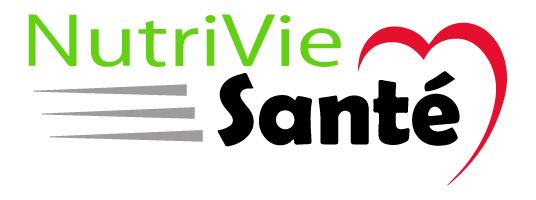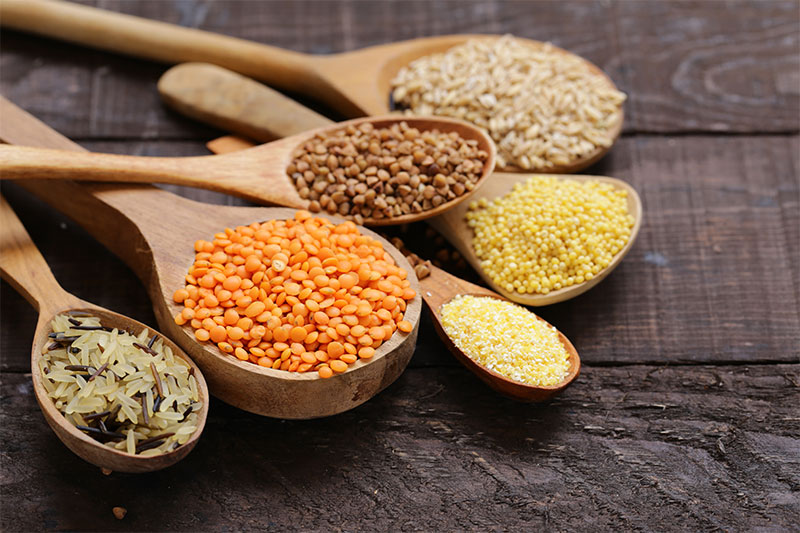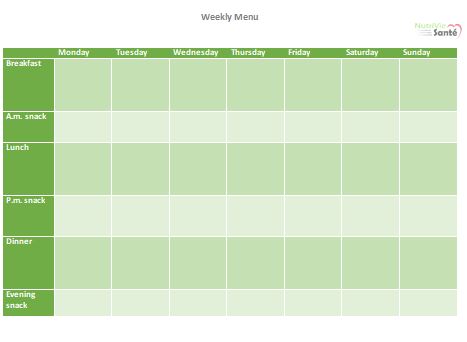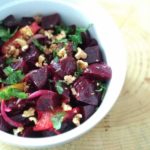Nourishing yourself with
self-compassion while quarantining
This is undoubtedly an unprecedented time that we are going through. Anxiety and stress are at their peak during these times of uncertainty. The guidelines are clear; we should stay home as much as possible to protect ourselves and to decrease the spread of the COVID-19 virus.
But of course we still need to eat and do our groceries. We need to modify our habits though. For instance, we cannot go to the grocery store as often as before and all the foods we need are not always available. Therefore, here are some tips on how to manage to our best capability our nutrition during this crisis.
Planning your meals and snacks
Planning your meals and snacks for the next one or two weeks is crucial. This will avoid unnecessary trips to the grocery store if you are lacking some ingredients at home.
Knowing which foods you need, will also avoid hoarding too many foods at home so that we leave enough for others and to minimize food waste. In addition, your plan will give you a little sense of security which can be reassuring in those times filled with unknowns.
While planning your meals, do not hesitate to double or triple your recipes so that you can freeze the leftovers and have backup meals for the future. Many recipes such as a stew, a chilli, lasagna, meat sauce and soups are freezer-friendly.
You can use the template below to plan your meals and snacks. Bear in mind to keep your plan flexible when you plan your meals. For instance, if you do not have the time nor the energy to bake the muffins that you planned to eat as a snack on Friday, give yourself the flexibility of substituting them with other snacks such as granola bars.
Your plan should not be too rigid as it will put too much pressure on your shoulders. And I think you will agree with me that this is the last thing you need right now.
After making your weekly menu, do an inventory of the ingredients that you already have at home. You can then make a grocery list of the food you need to buy at the grocery store.
The importance of being flexible
With increasing demands for some ingredients at the grocery store, it is likely that you might not find everything that you need. And that is the time to be a bit more creative. For example, if you needed ground beef for your chilli but are unable to find some at the store, you could substitute with any other meats, tofu or may be just double the amount of beans in the recipe.
What to buy during this pandemic
You will find below a list of foods, categorized in food groups to give you some ideas of foods to buy for the planning of your meals and snacks.
You will notice that I have also included ready-made dishes such as soups and frozen pizzas. Yes they are processed foods but it is important to be even more kind and indulgent towards yourself now and not to set unrealistic objectives. You certainly do not want to add food guilt to the anxiety, fear and the stress that we are already feeling.
Grain products
- Breakfast cereals, oats, granola bars, cookies, muffins
- Flour to make muffins, bread, cake, pie crust, pizza dough or to thicken sauces, etc.
- Different types of breads (sliced bread, pita, tortilla, English muffins, etc.) You can freeze your bread to increase the shelf-life.
- Rice, quinoa, pasta, couscous, barley, noodles, etc.
- Frozen fries, frozen hash brown, etc.
- Crackers, chips, popcorn
Vegetables and fruits
- Fresh vegetables and fruits
Even though frozen vegetables and fruits are often put forward these days, you can still buy fresh vegetables and fruits as usual. Just make sure you make use of them before your frozen or canned produce. You can also buy more vegetables and fruits with a longer shelf-life (lasting many weeks);for example: cabbage, potatoes, sweet potatoes, carrots, apples, oranges. - Frozen or canned vegetables and fruits
- Dried fruits for snacks, salads or for baking
- Applesauce or any other fruits in puree
- Ready-made vegetables soups
Meats and substitutes
- Fresh meats, poultry and fish can be easily frozen for many months
- Frozen fish
- Frozen burgers, breaded chicken or fish
- Whole roasted chicken that you can debone, break into small pieces and freeze
- Cold cuts
- Canned fish (salmon, tuna, sardines, etc.)
- Pulses (dried or canned)
- Eggs (can be refrigerated for many weeks)
- Tofu, tempeh, frozen edamames (soy beans)
- Nuts, seeds and different types of nut butters
Dairy products and substitutes
- Milk
- Plain or flavoured yogurt, drinkable yogurt
- Cheese (to prolong the shelf-life of hard such as cheddar or mozzarella cheese, you can grate them before freezing. You will be able to keep the cheese for 2-3 months in the freezer.
- Butter
- Refrigerated dairy-free beverages (soy, almond, coconut, oat beverage, etc.)
- Milk or soy or almond beverage in Tetra Pak boxes (can be kept at room temperature in the pantry but once opened, you would have to keep the milk in the fridge)
- Canned evaporated milk (such as Carnation)
- Milk powder (found in the bakery aisle at the grocery store)
- Soy pudding
Others
- Sugar, honey, maple syrup
- Oil (canola, olive, avocado, etc.)
- Herbs (fresh or dried) and spices
- Vinegars (white vinegar, wine vinegar, balsamic vinegar, etc.)
- Sauces (soy, tomato, pesto, alfredo, etc.)
Ready-made dishes to facilitate meal preparation
- Packaged ready-made pasta dishes such as Kraft Dinner
- Frozen pizza
- Canned soups, boxed soups
- Frozen meals
This list can give you some inspiration as to what kinds of foods you can buy but it is by no means a mandatory ingredients that you absolutely need to buy. You can also use it to have ideas of substitute ingredients in case your usual ingredients that you buy are not available. It can also help you to choose ingredients that can be kept for a long time so that your trips to the store are kept to a minimum.
Stay strong and keep safe everyone. We are in this together! #it’sgoingtobeok





